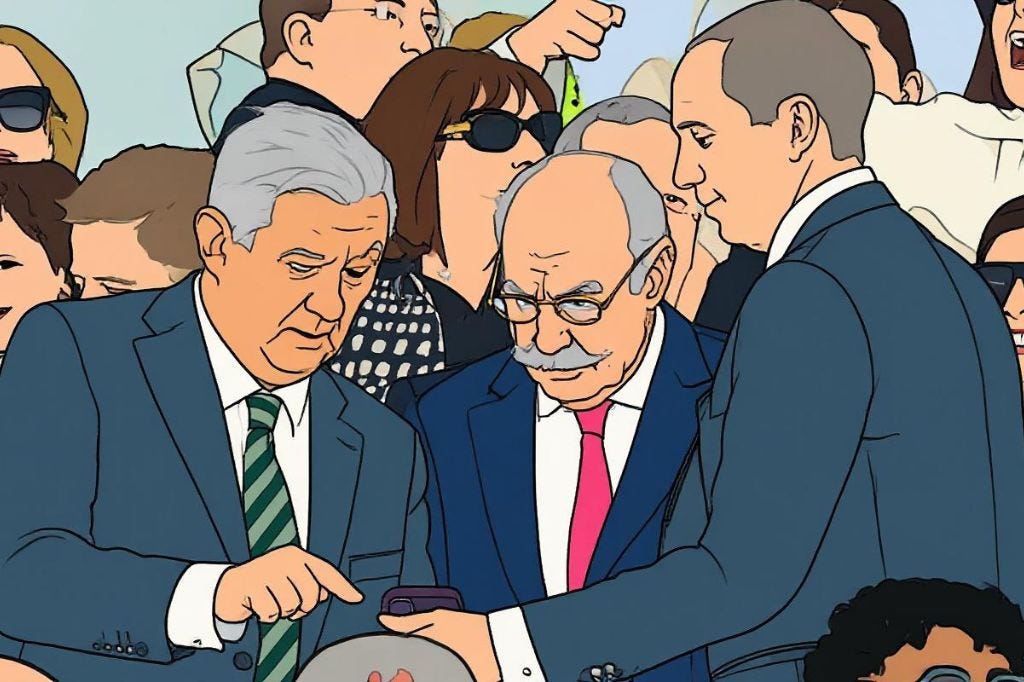The "Not Another Penny" Campaign: Celtic Supporters' Financial Revolt Against the Board
From Champions League Humiliation to Merchandise Boycott: The Crisis Engulfing Celtic Park
Celtic finds itself embroiled in an unprecedented supporter uprising not seen since the 1990s, which has escalated from banner protests and silent demonstrations to a comprehensive financial boycott targeting the very revenue streams that underpin the club’s commercial success. The “Not Another Penny” campaign, launched by the Celtic Fans Collective on October 16, represents the most serious challenge to the club’s leadership in decades, striking directly at the boardroom’s most sensitive pressure point: profitability.
A Perfect Storm of Discontent
The roots of this movement trace back to a catastrophic summer that exposed deep structural problems at Celtic Park. On August 25, Celtic suffered a humiliating Champions League qualifying exit to Kairat Almaty of Kazakhstan, losing on penalties after 210 goalless minutes - costing Celtic an estimated £40 million in lost revenue but more importantly the right to play among Europe’s elite.
What transformed disappointment into fury was the board’s handling of the summer transfer window. Despite holding £77 million in cash reserves and posting record revenues of around £143 million - with profits soaring 153% to £34 million after tax -Celtic failed to adequately strengthen the squad before the crucial Champions League qualifier. Manager Brendan Rodgers had identified key positions that needed strengthen and instead what we got instead were project players signed and key players sold but not replaced.
On September 6, Celtic issued what fans universally condemned as a tone-deaf, 1,030-word statement defending the board’s approach and citing UEFA Financial Sustainability Regulations as justification for their transfer policy. This statement, which some supporters suspected was generated by AI, became the flashpoint that fuelled organised unrest against the board. The club’s assertion that “throwing money around” was “not a sustainable route to success” rang hollow to supporters who watched their cash-rich club operate with what they perceived as penny-pinching timidity.
The Formation of the Celtic Fans Collective
Within days of that September statement, over 420 Celtic supporter groups, fan media outlets, and organisations signed an open letter demanding accountability from the board. On September 10, a public meeting at Grace’s bar in Glasgow drew representatives from over 80 groups. By September 20, the Celtic Fans Collective had formally organised with a 23-member steering group representing all major supporter constituencies: the Celtic Supporters Association, Affiliation of Registered Celtic Supporters Clubs, Association of Irish Celtic Supporters Clubs, Celtic Trust, Green Brigade, and multiple fan media organisations.
The Collective’s formation marked a watershed moment in Celtic supporter activism. Unlike previous sporadic protests, this represented a unified, coordinated movement with clear leadership structures - that we haven’t seen since the Celts for Change movement in the 90s - dedicated subgroups for research, communications, matchday actions, and corporate governance, and a long-term strategic plan extending through the November 2025 AGM and beyond.
Escalating Protest Actions
The Collective’s campaign progressed through calculated escalation. Initial protests included a 12-minute silent demonstration during the goalless draw against Hibernian on September 28 - with plans for extended silence at subsequent matches. These were suspended when Celtic’s board agreed to a meeting on October 6 with chief executive Michael Nicholson and chief financial officer Chris McKay.
That meeting proved catastrophic for boardroom credibility. Attendees described it as revealing “a lack of humility, awareness and accountability” from club leadership. When questioned about Rodgers referring to certain acquisitions as “club signings” rather than his own targets, Nicholson reportedly responded with a shrug - a gesture that encapsulated for many fans the board’s dismissive attitude. The Collective concluded that the meeting “produced no tangible outcomes” and that “the club’s leadership remains detached from the concerns of its supporters”.
The “Not Another Penny” Campaign: Targeting the Balance Sheet
Following the failed meeting, the Collective convened on October 15 and emerged with their most potent weapon yet: a comprehensive spending boycott effective immediately and continuing until February next year. The campaign’s demands are unambiguous:
No merchandise purchases from Celtic stores or official channels
No food or drink at Celtic Park on matchdays
No participation in stadium tours, club restaurants, bars, or Celtic-run events
Match tickets only - continuing to support the team while starving the board of ancillary revenue
The timing proved devastatingly strategic. The campaign launched just as Celtic unveiled their new Adidas SPZL leisurewear collection - including a £230 smock and merchandise packages costing over £500. The collection’s launch, which would typically generate significant revenue during the lucrative Christmas retail period, instead became a lightning rod for supporter anger.
Why This Campaign Threatens the Board’s Survival
The financial implications are substantial. Celtic’s merchandising revenue ranks 17th in European football at approximately £30 million annually, with the club receiving an estimated £10 million fixed payment from Adidas plus £25 million in royalties and proceeds from sales. This represents a critical revenue stream that, unlike broadcast or matchday income, is entirely dependent on active supporter purchasing decisions.
Reports intimate that merchandise sales reportedly dropped 50% in September 2025 even before the formal boycott began - evidence that fan disillusionment was already manifesting in reduced spending. With a coordinated campaign now in place during the critical Christmas period, when clubs typically generate their highest merchandise revenues, the financial impact could be severe.
The campaign’s genius lies in its surgical precision. By continuing to purchase match tickets, supporters maintain their backing for the team on the pitch while isolating the board financially and reputationally. This addresses previous criticism that protests might harm team performance by affecting matchday atmosphere.
Already, the board’s commercial challenges are visible. The Europa League home opener against Braga drew only around 46,000 fans - leaving 14,000 empty seats at Celtic Park. While not an organised boycott, this 25% attendance shortfall reflected spontaneous fan disillusionment and forced the club to belatedly introduce concession pricing for subsequent Europa League matches. Every empty seat represents not just lost ticket revenue but also foregone spending on concessions, merchandise, and ancillary services.
The Board Under Siege: Who’s in the Crosshairs?
The Collective has identified three primary targets for removal: Chairman Peter Lawwell, Chief Executive Michael Nicholson, and Chief Financial Officer Chris McKay.
Their critique extends to the non-executive directors, four of whom have served 15+ years, with two entering their third decade on the board and one approaching their fourth decade. This entrenched leadership, the Collective argues, has created a culture of complacency where accountability is absent and corporate governance norms are violated.
Peter Lawwell, who served as chief executive from 2003 to 2021 before returning as chairman in 2023, embodies for many supporters the club’s conservative, profit-focused approach. While defenders like former manager Neil Lennon credit him with financial prudence and stability, critics see his influence as stifling ambition and perpetuating outdated transfer strategies.
Michael Nicholson, thrust into public view properly for the first time during the October 6 meeting, appeared “badly out of his depth” according to meeting observers. His admission that the club took “responsibility” for Champions League qualification failure rang hollow when combined with his shrug regarding transfer policy contradictions.
Chris McKay, the chief financial officer, was described by attendees as “a bully, barely keeping his anger in check” when questioned by supporters. His defensive posture during the meeting only reinforced perceptions of a board resistant to accountability.
Behind these executives stands Dermot Desmond, the 34% majority shareholder whose absentee landlord management style has drawn increasing criticism. A club director who would rather play or watch a round of golf than watch the team he is invested in.
The Comprehensive Critique: Beyond Transfers
The Collective’s indictment extends far beyond summer transfer failures. Their statement catalogues systemic deficiencies:
European Failures: Five consecutive Champions League qualifying exits have become the norm rather than aberration, with Celtic repeatedly eliminated by teams they should comfortably overcome.
Women’s Team Underfunding: Despite Celtic being Scotland’s wealthiest club, the women’s team operates with a budget comparable to Hearts or Hibernian - relegating them to mid-table mediocrity after winning the championship. Manager Elena Sadiku, who delivered Celtic’s first women’s title, has been undermined by resource constraints that leave her “hopelessly outgunned” against better-funded Glasgow rivals.
Archaic Transfer Strategy: Repeated failures to identify, recruit, and integrate players before crucial European ties reveal fundamental strategic inadequacy.
Academy Underperformance: Once a source of talent and revenue, Celtic’s youth development system lags behind expectations. with no sign of a pathway to the first team resulting in youth prospects leaving to play for other clubs.
Fan Engagement Vacuum: The club’s communication strategy alternates between silence and corporate platitudes, with meaningful supporter engagement non-existent until forced by protest.
Ticketing Policy: The controversial Home Cup Ticket Scheme, which promised members guaranteed access, was undermined when the club allegedly redirected tickets to corporate clients at inflated prices for the League Cup semi-final at Hampden. This prompted boycott announcements from both the Green Brigade and The Bhoys supporter groups.
The AGM: A Looming Showdown
The upcoming Celtic PLC Annual General Meeting in November 2025 represents a critical battleground. The Celtic Trust has issued urgent appeals to shareholders to support two resolutions before the October 21 deadline:
Resolution 1 demands the board prepare and publish a comprehensive 3-5 year strategic plan with measurable football and financial goals, with executive remuneration tied to achieving those objectives.
Resolution 2 declares no confidence in Nicholson, Lawwell, and McKay, calling for their removal along with non-executive directors who have served excessive tenures and failed to hold executives accountable.
While these resolutions face long odds - Desmond’s 34% stake and Lindsell Train’s 15.7% holding give them effective control through bloc voting - the symbolic value is significant. A strong showing in the room would demonstrate the depth of supporter opposition and increase pressure for change.
Can the Board Survive?
The critical question facing Celtic is whether the current board can withstand this unprecedented financial and reputational assault. Several factors suggest their position is increasingly precarious:
Financial Pressure: Celtic’s commercial model depends heavily on supporter engagement. Merchandise revenue, hospitality sales, and ancillary spending are entirely discretionary. A sustained boycott during the crucial Christmas period could see revenue drop by millions of pounds, directly impacting the KPIs that define boardroom success.
Sponsor Sensitivity: Celtic’s commercial partnerships, including the lucrative 10-year Adidas deal signed in 2025, are predicated on fan engagement and brand strength. If sponsors and partners observe plummeting merchandise sales, empty kiosks, and widespread supporter disaffection, they may demand explanations and potentially renegotiate terms.
Reputational Damage: The optics of 14,000 empty seats for European football, supporter boycotts, and wall-to-wall negative publicity undermine Celtic’s claims to be “world class in everything we do”. This damages the club’s ability to attract top players and managers.
Sustained Organisation: Unlike previous sporadic protests, the Celtic Fans Collective represents a structured and strategically sophisticated movement with clearly defined goals, democratic structures, and long-term planning horizons. This isn’t going away in a few days.
Historical Precedent: Celtic supporters have form for forcing boardroom change. In 1994, fan pressure from the Celts for Change group and a financial crisis led to Fergus McCann’s takeover and transformation of the club. The current movement deliberately evokes that legacy.
However, the board also possesses significant defensive advantages:
Ownership Structure: Desmond’s 34% stake gives him effective control. Unless he decides change is necessary, the board can weather shareholder rebellion at the AGM.
Financial Cushion: With £77.3 million cash reserves and £33.9 million annual profits, Celtic can absorb several quarters of reduced ancillary revenue without existential threat.
Domestic Success: Celtic remains dominant domestically, currently second in the Scottish Premiership and favourites to lift the title again this season. As long as league titles and European football in some form continues, some Celtic fans will question the necessity of upheaval.
Divided Support: Not all supporters back the Collective’s approach. A portion view the protests as entitled, counterproductive, or harmful to the team.
The February 3 Review: What Happens Next?
The Collective has scheduled February 3, 2026, as the campaign review date. By then, several factors will have crystallised:
Financial impact data from the crucial October-December retail period
AGM outcomes and any board responses to shareholder resolutions
European performance in the Europa League group stage
Domestic form and the title race trajectory
Board concessions or continued stubbornness
If the board remains unmoved and the boycott maintains strong participation, the Collective faces a strategic choice: continue indefinitely, escalate to match ticket boycotts, or seek alternative tactics. Conversely, if the board offers meaningful concessions - leadership changes, strategic plan publication, enhanced fan engagement - the Collective may achieve its goals without extending the campaign.
A Club at the Crossroads
The “Not Another Penny” campaign represents far more than a protest against transfer policy or executive personalities. It reflects fundamental questions about what Celtic Football Club should be: a profit-maximising commercial entity content with domestic dominance, or an ambitious European competitor willing to leverage its financial strength for sporting success.
For the first time in decades, Celtic’s boardroom faces organised, sustained financial pressure from the people it most depends upon: the supporters whose loyalty and spending underwrite everything. The board’s historic assumption - that supporter devotion guarantees unquestioning financial support regardless of boardroom performance - has been shattered.
Whether Peter Lawwell, Michael Nicholson, and Chris McKay can survive this unprecedented assault depends not on reasoned arguments about financial sustainability, but on cold commercial calculation. When sponsors ask questions, when merchandise sits unsold, when empty seats become the story rather than the football, boards act. The “Not Another Penny” campaign wages its battle not with banners or chants, but with the most powerful weapon supporters possess: their wallets, kept firmly closed until change comes.
The board may control the shares, but the supporters control the cash flow. In that imbalance lies the answer to whether this board can survive. The evidence increasingly suggests they cannot.







Triff piece mate. Hail hail